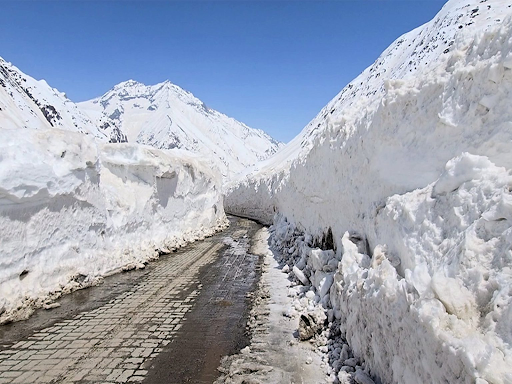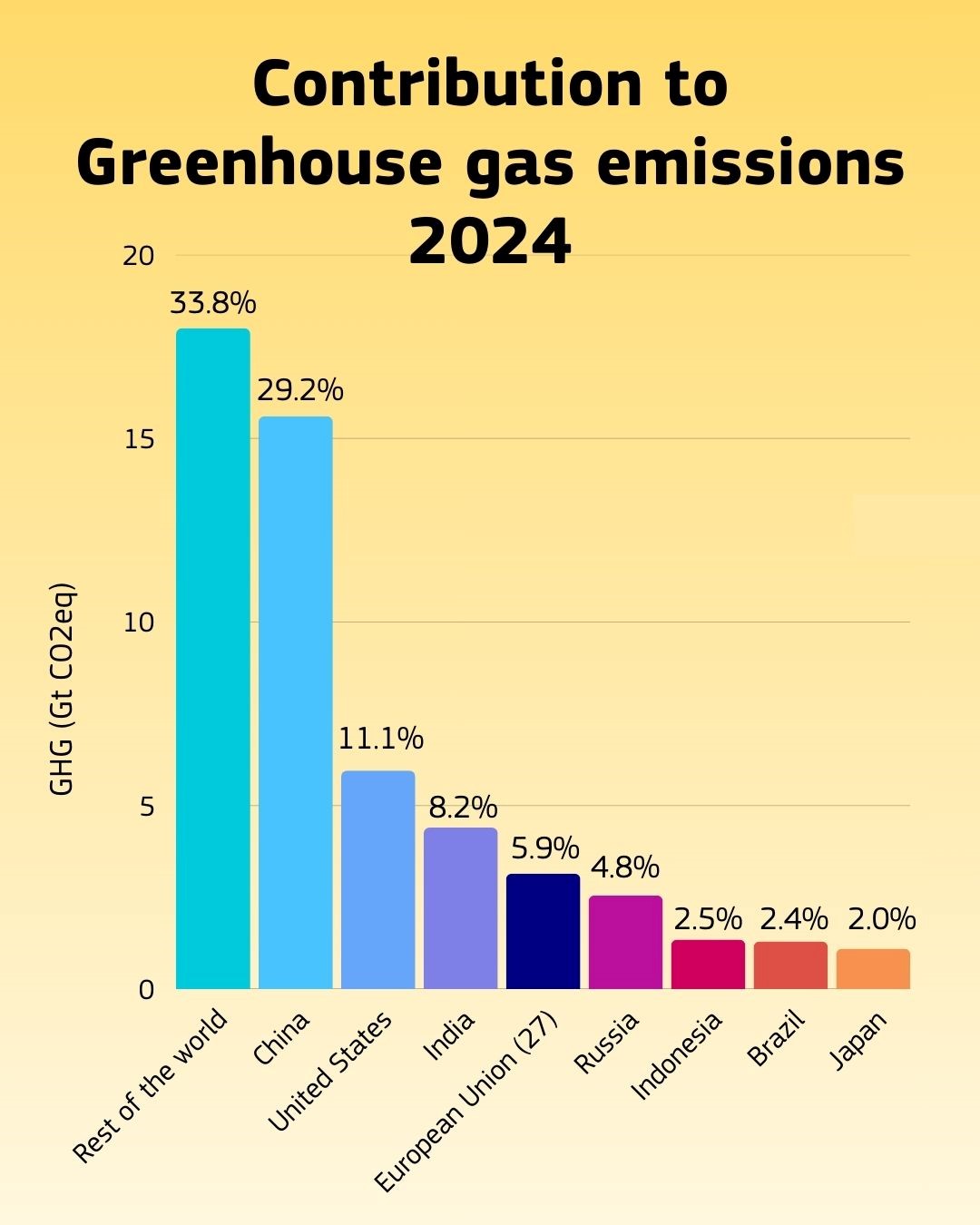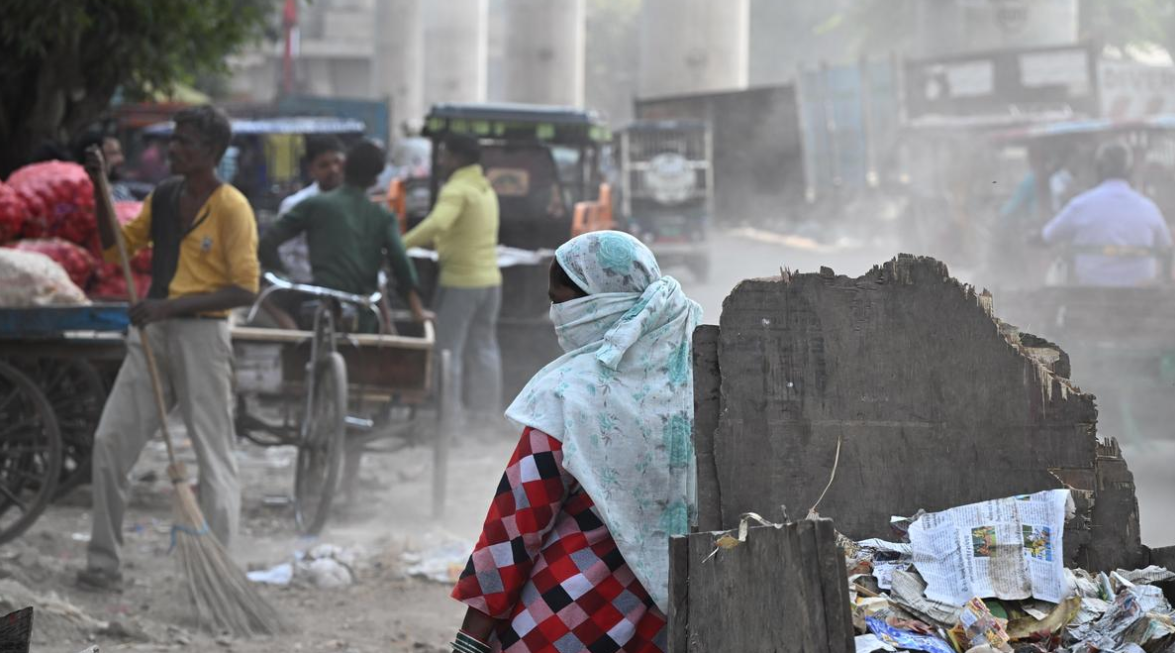



Climate change is increasing avalanche risks in the Himalayas. Rising temperatures and erratic weather destabilize snow and thaw permafrost, causing frequent avalanches. India must strengthen forecasting, disaster response, structural safeguards, and community preparedness to build resilience against this escalating climate threat.

Copyright infringement not intended
Picture Courtesy: NEWSONAIR
A deadly avalanche in Nepal’s Rolwaling region on November 3, 2025, brought global attention back to the rising risks in high-altitude zones.
An avalanche is the rapid downhill movement of snow, ice, rock, or debris on a mountain, occurring when an unstable snowpack collapses.
Factors contribute to their formation:
The Hindu Kush Himalayan (HKH) region, or "Third Pole," is warming faster than the global average, leading to changes in snow and ice patterns that increase the risk of avalanches.
Accelerated Glacial Melt
Rising temperatures are melting glaciers rapidly. Glaciers in the HKH melted 65% faster between 2011 and 2020 than in the previous decade. (Source: UN Water)
ISRO reports that since 1984, 27% of Himalayan glacial lakes, including 130 in India, have expanded.
Changing Precipitation Patterns
Warmer air leads to more rain at lower elevations and wetter snow at higher ones—both conditions that destabilize snowpacks.
A 2018 University of Geneva study linked the rising frequency of avalanches in Himachal Pradesh since the 1970s directly to winter warming.
Intense Freeze-Thaw Cycles
Rapid daily temperature swings weaken snowpack layers, making them more prone to collapse.
Permafrost Melting
Thawing permafrost creates water pockets beneath ice layers, increasing slope instability.
Loss of Life and Livelihoods: Over 120 deaths have been recorded in the Indian Himalayas due to avalanches in just two years (up to April 2023).
Infrastructure Damage: Essential infrastructure like roads, bridges, and power lines are frequently buried or destroyed.
Economic Disruption: Tourism, a vital part of mountain economies, suffers as affected regions become hazardous.
Threat to Security Personnel: Defense forces operating in high-altitude border areas are constantly exposed to avalanche risks.
Cascading Disasters: Avalanches often trigger further calamities such as landslides, floods, and debris flows, intensifying overall damage.
Advanced Forecasting and Warning Systems
The Defence Geoinformatics Research Establishment (DGRE), a DRDO laboratory, is the nodal agency for avalanche research and forecasting.
It uses AI-based prediction models and manages an extensive network of snow observatories and automatic weather stations (AWS) to achieve this.
Infrastructure and Engineering Solution
A collaboration between the Ministry of Road Transport and Highways (MoRTH) and DRDO applies DGRE's expertise to mitigate avalanche and landslide risks on national highways.
Protective structures like avalanche control pillars, snow fences, and diversion barriers are used, alongside controlled blasting to release unstable snow.
Emergency Preparedness and Community Awareness
Drones and thermal imaging aid rescue operations. State teams get high-altitude rescue training; awareness programs target residents and tourists.
NDMA Guidelines
The National Disaster Management Authority's (NDMA) snow avalanche guidelines help states prepare for, mitigate, and respond to avalanches, aiming to reduce their impact through preparedness, early warning, and mitigation.
Source: NEWSONAIR
|
PRACTICE QUESTION Q. Discuss the factors that make the Himalayan region inherently prone to avalanches. 150 words |
An avalanche is a rapid flow of a large mass of snow, ice, and rock down a mountain slope. The most common and dangerous type is a slab avalanche, where a cohesive layer of snow breaks away and slides down, but loose snow avalanches also occur.
Avalanches are caused by a combination of factors, including weather conditions, the structure of the snowpack, the steepness and shape of the terrain, and a trigger. Common triggers include heavy snowfall, rapid warming, and human activity like skiing or snowmobiling.
A wet-snow avalanche occurs when liquid water is present in the snowpack, reducing friction and weakening the snow's structure. These are becoming more frequent, even during mid-winter, due to warming events, and can be denser and more destructive than dry-snow avalanches.






© 2025 iasgyan. All right reserved